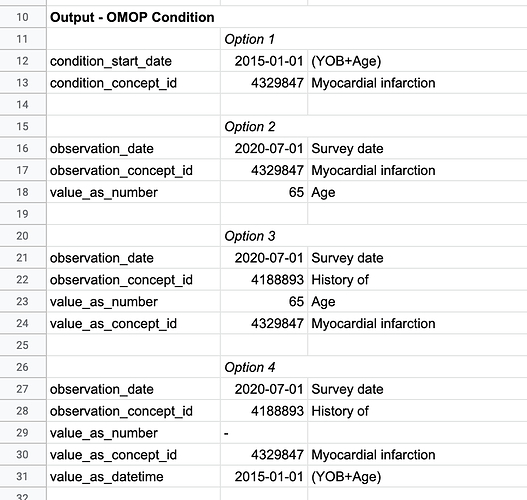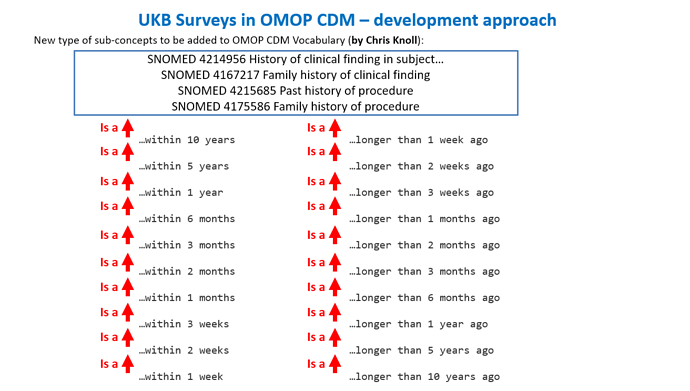Hi,
I’ve taken some time to consider your points. One thing I’d like to clarify about my position on observational data is that the dates of the facts aren’t always when something actually happened, but rather it’s the date that we were informed of the fact. Most of the time, these dates are very close: the date of a measurement is probably the same date that we were informed of this fact; the date of a diagnosis is usually the same that the system is informed.
Consider the case where someone comes to a doctor after suffering for a week with some sort of painful swelling. The doctor concludes that there’s an infection. Does the doctor put down that the infection started a week ago? The date of the diagnosis of ‘infection’ will be the date the doctor found out about it, not back-filled to some prior date.
But when we get to survey and ‘history of’ type of facts, I believe this principle holds: when a survey is collected, you know the date the information was collected (ie: made known to the system) but the information within the survey could relate to “current state of patient” or “something that occurred int he past”. If it’s current state, then it is an observation on the date of the survey. If it is an observation about the past, then it is a statement about history, but as of the date of the survey. I don’t think we should throw this away, but I also don’t think we should inject ‘facts’ into history since clinical actions taken on a patient didn’t actually have that information at the time.
So, getting to your example of survey data: imagine a patient timeline with clinical observations, and in the middle of that timeline the patient answers the survey. Using any index date before the survey would lead you to some clinical conclusions/statements about the characteristics of the patient that would be very different after the survey was performed at an index after the survey. So, don’t throw it away, just treat the information as if it was known as of the survey date, using direct concepts as observations if it is current state, and wrap it into a ‘history_of + value_as_concept’ for those historical cases. in this way, we don’t actually need a date of when the actual thing happened in history.
But, if ‘scope of history’ is important (as in: recent history, distant history), I think it would make sense to introduce a hierarchy of History Of concepts that allow you to capture the different history contexts, something like:
-> within 5y-> within 1y-> Within 6m -> within 3m -> within 1m
History Of -|
-> after 1m -> after 3m -> after 6mo -> after 1y -> after 5y
The idea of this hierarchy is to allow you to say things like ‘anything within 5y’ and things coded to 1y, 6m, 3m or 1m are included in the descendants. Same thing with after 1m…If you don’t care, just pick all descendants of ‘history of’.
I’d translate things like ‘at age 65’ to one of these buckets, otherwise you need to do a multi-step translation of what the age was relative to the date in order to covert that date into something usable for comparison.
And, what about ‘family history’ cases? I think you’d solve this the same way: the date of the observation is when it was known, not ‘the beginning of time’ as some people suggest. Clinical decision making is based on the family history based on when this information is known, not retroactively back to the beginning of their patient record.
I think I’ve seen other proposals where ‘history of’ observations are placed outside of observation periods or at the start of observation periods, but I really don’t think this makes sense: If you have a history of smoking, do you really put that record back at your year of birth (if your observation starts at birth)? pretty sure they do not allow smoking infants in the OR. Instead, all of these facts could just be captured at the day they are known in an observation record, and clinical analysis can be performed based on what is known at the time of the index, not what we ‘think’ we might have known based on some date-offset from a survey response (or patient reported history).



